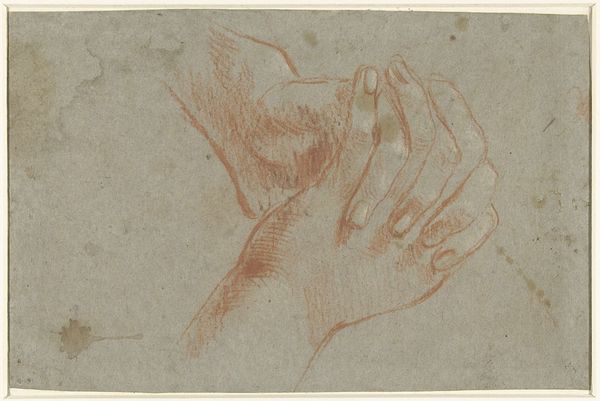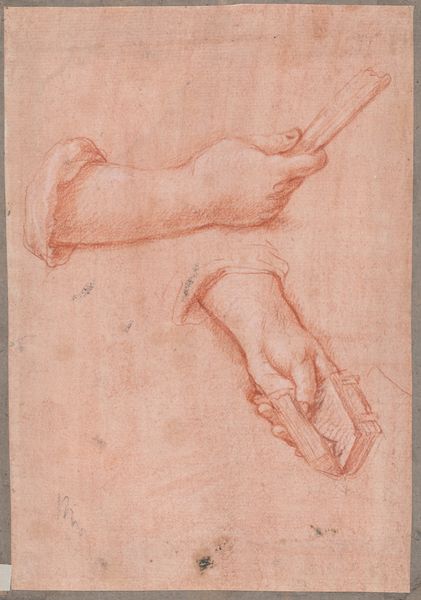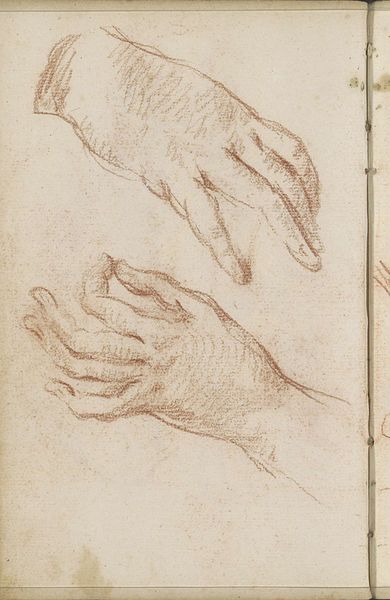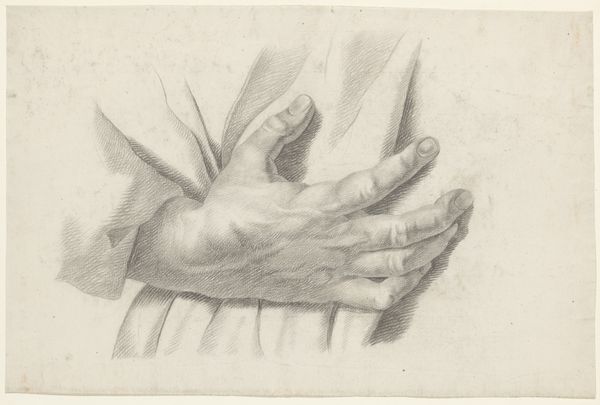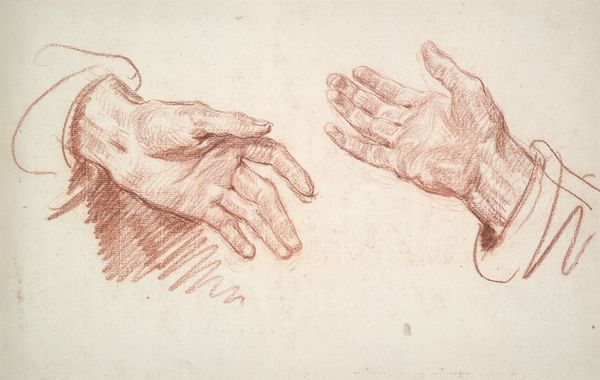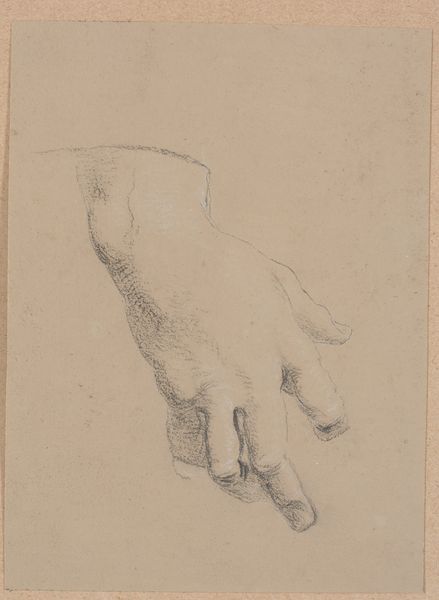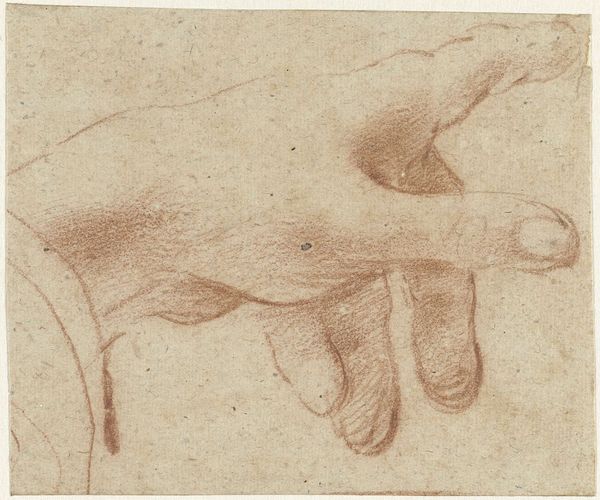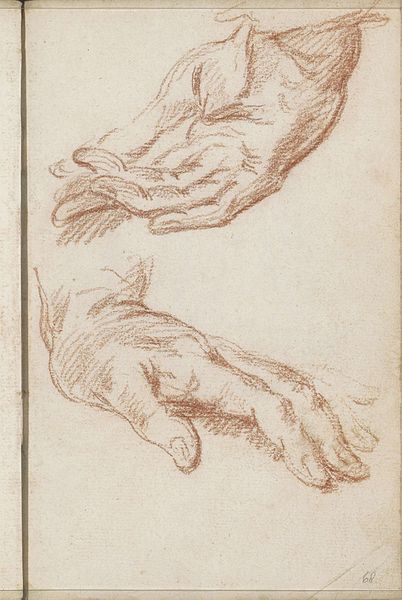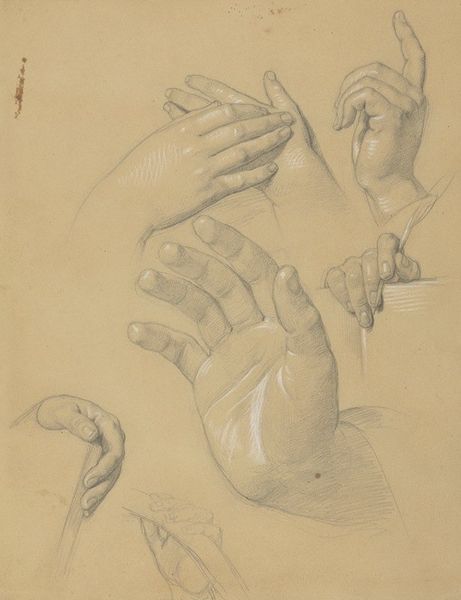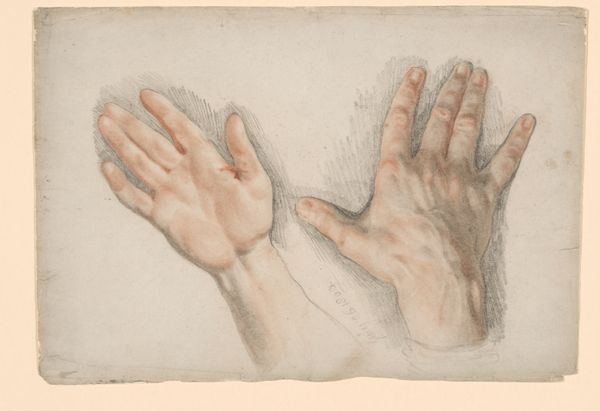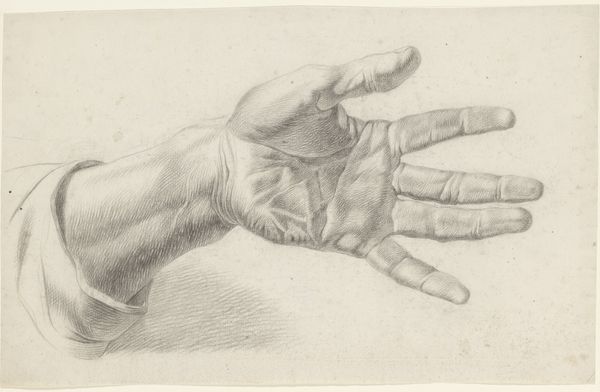
drawing, dry-media, charcoal
#
portrait
#
drawing
#
charcoal drawing
#
form
#
dry-media
#
portrait reference
#
line
#
portrait drawing
#
charcoal
#
academic-art
#
realism
Dimensions: 305 mm (height) x 247 mm (width) (bladmaal)
Editor: Here we have Karel van Mander III’s, "Studies of two hands" a charcoal drawing, dating back to sometime between 1609 and 1670. What strikes me is how realistic the hands appear and I’m curious about the emphasis on this subject matter. How would you interpret this work, focusing on its form? Curator: Indeed. Let us consider the formal qualities. Observe the artist's rendering of light and shadow to create three-dimensionality. The use of line and shading meticulously captures the textures, wrinkles, and underlying structure of the hands. Notice how the varying pressure applied to the charcoal imbues a sense of weight and presence. This emphasis isolates the form of the hand itself. Editor: So, you’re saying it’s the very way that Mander III has composed the image – the strategic use of shading, the varying pressure – that conveys the artwork's meaning? Curator: Precisely. One might say, the semantic possibilities emerge from the compositional elements and artistic processes themselves. Consider, for instance, the anatomical exactitude. Note the careful modelling of knuckles, tendons, and the subtle creases in the palms. These contribute to its powerful illusionism. This realism emphasizes its formal and conceptual intention. Editor: That’s a great point. I see how the precision in capturing the nuances of the hands elevates their presence and highlights their form. Curator: Precisely. It stands on its own and exemplifies a moment frozen in art history, emphasizing its physical qualities. It draws our attention to what makes it, at the level of art and skill, the phenomenon that it is. Editor: I never considered that art’s meaning could arise purely from its method! Curator: There are so many ways to appreciate a work of art. What I find truly intriguing is considering artworks not merely as windows to a historical world or allegorical symbolisms but as intentional arrangements of forms and mediums, ripe with expressive and cognitive implications.
Comments
No comments
Be the first to comment and join the conversation on the ultimate creative platform.
